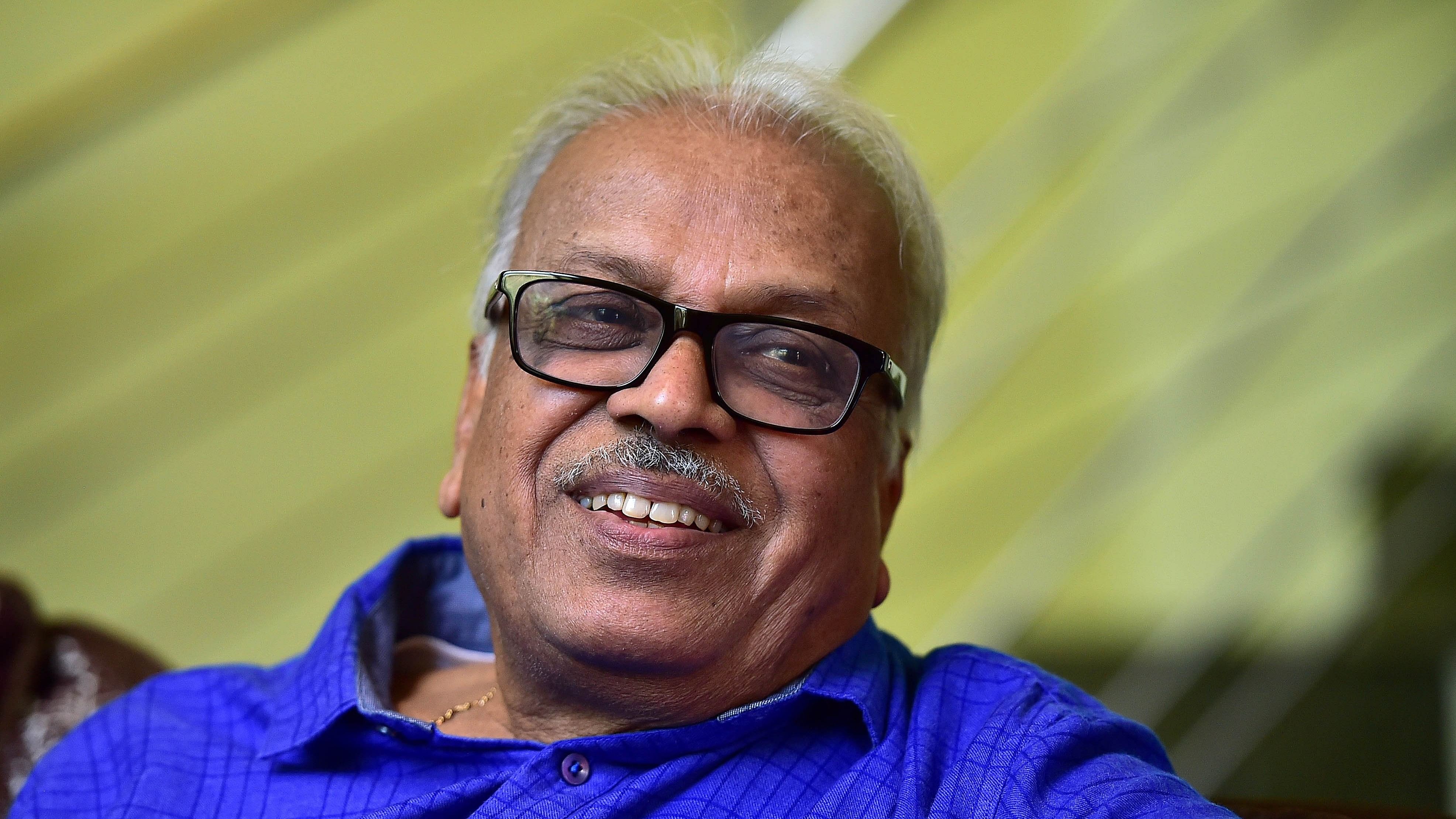
H S Venkateshamurthy.
Photo credit: Ranju P
It does not come as a surprise to know that H S Venkateshamurthy was already writing plays, novels and Bhamini shatpadis (a type of sestet or six-line poem) while he was in middle school. The writer and poet has always approached literature as a way of life. Today, he holds great significance in Kannada poetry and literature.
The writer was born in Hodigere village in Shivamogga district. He has always had a great love for reading Kannada literature. While his career began as a vocational trainer, the author later became a professor. He taught Kannada at St Joseph College of Commerce in Bengaluru for 27 years.
The opportunity to meet numerous Kannada writers and scholars in the cultural hub was well worth the hardships of a big-city life while raising a family of six. As his literary wisdom expanded in the association of well-known poets like Pu Thi Narasimhachar, K S Narasimhaswamy, G S Shivarudrappa and others, his talent continued to be honed.
From ‘Parivrutta’ to ‘Buddhacharana’, some of his literary works that stand out are 'Sindaabaadana aatmakathe', 'Kriyaaparva', 'Onamarada giligalu', 'Agnisthambha', and 'Amerikadalli billu habba'.
Thespian B V Karanth has rightfully remarked that “There is poetry in his stories and a story in his poems (naatakadalli kaavya, kaavyadalli naataka)".
Ahead of turning 80 this week, the writer reflects on his inspirations and the purpose of poetry.
Growing up, what kind of artistic influences did you encounter?
My grandfather Bheema Rao was a mrudanga player and a great fan of Yakshagana and Bayalaata (street plays). We went to these performances and attended the elaborate rehearsals as well. These performers were local Hodigere folks from different occupations.
Back then, in our village, there would always be experiments with Yakshagana. One of them was Bombeyaata (puppetry). These puppet shows were our main source of entertainment. I was fascinated by the drums they played, which perhaps contributed to my sense of rhythm.
What advice would you give to younger poets?
Poetry should be simple but profound. “To be simple is not that simple,” as K S Narasimhaswamy says. A good poem should give you comfort and contentment. Young poets should practise well, understand literature from the basics, interact with experts, build up knowledge and gain life experiences.
Which literary works or writers have you drawn inspiration from?
In our village, there was a tradition of reciting the poems of Kumaravyasa and Lakshmeesha. Gamakis or artists would recite and explain the meaning of Kumaravyasa’s poems. I was greatly influenced by these classic Kannada poets and that as a secondary school student, I would write poems in Bhamini shatpadi.
I would constantly hear Purandara Dasa’s keertanas at home from my mother, who was a very good singer. I was introduced to tatvapadakaras and vachanakaras by a bhajana mandali group who would roam the streets of our village and sing every evening.
I learned of haridasas through the Yakshagana puppet fairs that came to town. While in high school, I fell in love with poems of Bendre, Kuvempu and Narasimhaswamy and the songs of H R Leelavati who was a popular singer on radio then. At the same time, the rise of the modernist literature movement had reached its peak, and I started to enjoy Adiga’s works.
How has your upbringing influenced your work?
People mostly talk about their paternal lineage, but I am a proud descendant of my maternal lineage. Many poets, including Bendre and Narasimhaswamy, have proudly talked about their mothers in their works. My mother became a widow at 18, and I have seen her torment as a young widow in society. She was a primary school teacher who showed me how to “sail the boat of happiness in a sea of sorrow”. These experiences have made me a soulful and compassionate poet.
What are your thoughts on the present day Kannada literature?
In today's contemporary literature, significant works of fiction are emerging from new writers, particularly in the form of long-winded, epic novel. Significant contributions by women writers are a noteworthy development.
An important feature of this decade is the translation of great works from languages other than English. It has brought forth a rich harvest of translated works.